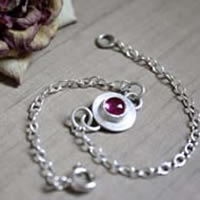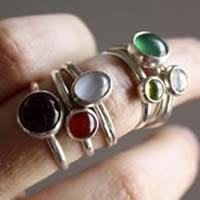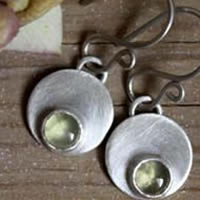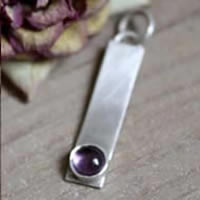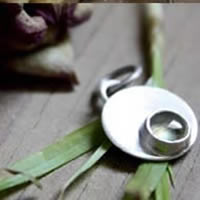- Jewelry
- Inspiration
- Good Deals
- Paintings
- About
- Contact
JEWELRY
- Anklet
- Bracelets
- Brooches
- Cufflinks
- Earrings
- Pendants & Necklaces
- Rings
- Draw your jewelry
- GOOD DEALS
- How to clean your jewel
- Metal we used
INSPIRATION
Aquamarine: history, healing properties and lithotherapy

Aquamarine properties
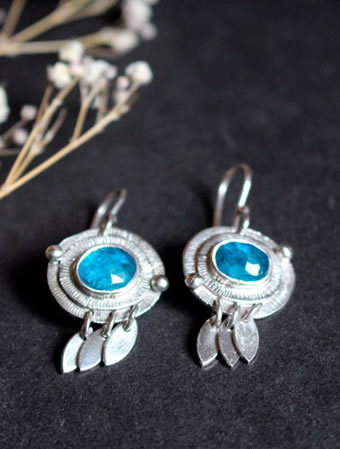
Aquamarine gets its name from the Latin "Aqua marina", meaning "sea water," in reference to its light blue-green hue, which evokes the calm and soothing tones of the ocean. While its name is primarily associated with this color, it is worth noting that the aquamarine’s palette can range from a very pale light blue to a deep, almost sapphire-like blue, depending on the iron content within the stone. The higher the concentration of iron, the more intense the color. It is also known by the names beryl or Siberian chrysolite.
In 1910, a remarkable discovery in Brazil revealed the largest aquamarine ever recorded, weighing 110 kg. This exceptional gem exemplifies the richness and diversity of this precious stone, which continues to captivate with its beauty and fascinating history.
Additionally, aquamarine is a mineral from the beryl family, which also includes emerald. Its chemical composition is primarily aluminum and beryllium silicate, and its color is due to the presence of iron. This stone is relatively hard, with a Mohs hardness of 7.5 to 8, making it suitable for use in jewelry. The transparency and calming color of aquamarine make it a popular choice for jewelry, from rings to pendants, and it is often cut into cabochons or faceted to enhance its beauty.
History, legends and beliefs about the aquamarine
Known since ancient times as the sailor’s stone due to its color, aquamarine was a prized talisman among sailors to ward off seasickness, face storms, and ensure a safe return from long voyages. Considered a symbol of luck and prosperity at the time, it was regarded as a protective and hopeful charm on the open seas.
The Romans, captivated by its beauty, extensively used aquamarine in their jewelry. Popular belief held that engraving a frog figure on the stone gave it the power to reconcile enemies, symbolizing peace and harmony.
In Greek mythology, aquamarine was believed to be the treasure of mermaids, adding a magical touch to its legacy.
In China, aquamarine was associated with the goddess Guanyin, the Great Compassionate One, protector of women and children, symbolizing mercy, compassion, and unconditional love.
The Maya, in turn, attributed properties to this stone connected to Akna, the goddess of motherhood and birth. They believed that aquamarine promoted a healthy pregnancy and protected newborns.
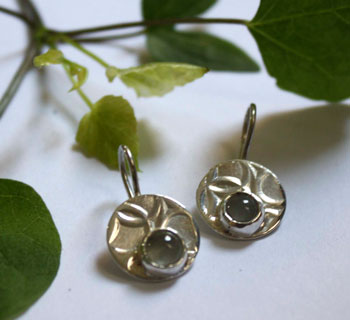
In the rich Slavic mythology, aquamarine comes to life alongside Kulapa, the goddess of herbs, magic, and the summer solstice, often revered as the Water Mother. The Slavs believed that aquamarine could influence the seasons and natural cycles, further strengthening its association with the powers of nature.
During the Middle Ages, alchemists attributed unique powers to aquamarine, using it to prevent fluid retention and improve digestion. It was also considered a valuable antidote to various poisons, making it a prized gem among the nobility of the time.
Beyond its physical virtues, aquamarine was believed to rekindle love between married couples, adding a romantic dimension to its mysterious properties. An intriguing use of aquamarine emerged in the Middle Ages with divination. Seers particularly favored this stone for crafting the famous crystal balls, as well as other methods of fortune-telling. Divinatory techniques included holding an aquamarine crystal suspended on a string over a bowl of water marked with letters of the alphabet to receive answers from beyond. The ripples formed by dropping an aquamarine crystal into water could also be interpreted to predict the future. This precious stone truly served as a link between the physical and mystical worlds.
Aquamarine, associated with Saint Thomas due to its maritime symbolism, evokes the apostle's voyages across the seas to spread the gospel. Thus, it becomes the stone of the traveler, carrying with it powerful symbolism and a captivating history throughout the ages.
Mines: Afghanistan, Brazil, Australia, Pakistan, Madagascar, the USA and Norway.
Healing properties and benefits of the aquamarine
Aquamarine, far beyond being a gem of dazzling beauty, is renowned for its diverse healing properties.
- It is credited with the ability to alleviate pain, offering effective relief against pollen allergies.
- Beyond its soothing virtues, aquamarine is considered an ally in the battle against depression, releasing tension and stress, promoting emotional balance.
- This precious gem is recommended for jaw and dental issues, providing relief from dental woes and contributing to overall oral health.
- It is also reputed for its effectiveness in addressing eye concerns, providing support for visual health.
- On a systemic level, aquamarine is believed to be of great assistance for kidney and lymphatic system problems.
- It stimulates the body’s defenses, particularly benefiting the nervous system, bladder, kidneys, and liver, fostering comprehensive immune system enhancement.
- Among its healing properties, aquamarine is attributed a role in treating anemia, making a valuable contribution to blood health.
- It is also beneficial for eliminating fluid retention by stimulating toxin elimination, thus promoting detoxification.
- Physically, aquamarine provides relief from cervical contractions, promoting muscle relaxation.
- Recognized for its benefits in treating certain skin conditions such as eczema, hives, acne, and herpes, it effectively contributes to the fight against shingles.
A multifaceted gem, aquamarine embodies a treasure with therapeutic powers that transcend its outer beauty.
 Please note that all healing properties presented for gemstones are gathered from various sources. This information is provided as a service and is not intended to treat medical conditions. It is recommended to consult a healthcare professional for serious medical issues and not to rely solely on gemstones as a treatment.
Please note that all healing properties presented for gemstones are gathered from various sources. This information is provided as a service and is not intended to treat medical conditions. It is recommended to consult a healthcare professional for serious medical issues and not to rely solely on gemstones as a treatment.
Aquamarine jewelry samples
To learn more about litotherapy, we recommend you the following books:


